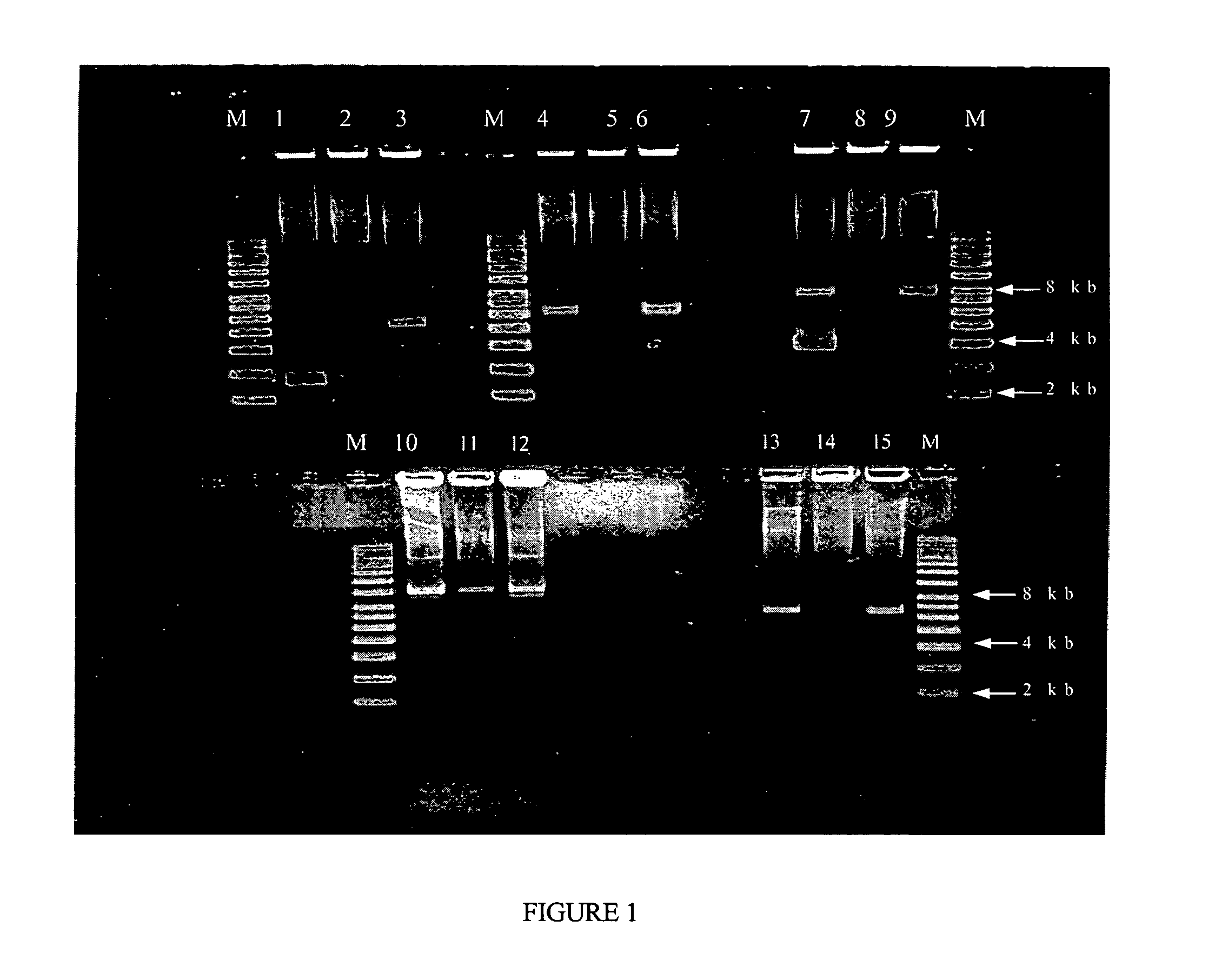Compositions and Methods for Controlling Copy Number for a Broad Range of Plasmids and Uses Thereof
a technology of plasmids and copy numbers, applied in the field of host cells for controlling the replication of plasmids, can solve the problems of inability to remove inhibitors, inability to replicate in foreign products, and inability to fully control the copy number of plasmids
- Summary
- Abstract
- Description
- Claims
- Application Information
AI Technical Summary
Benefits of technology
Problems solved by technology
Method used
Image
Examples
example i
Construction of Bacterial Strains
[0068]New E. coli host strains comprising at least one poly(A) polymerase gene operably joined to a conditionally inducible promoter were constructed using E. coli strain TransforMax™ EC100™-T1®(F-mcrA Δ[mrr-hsdRMS-mcrBC] 80dlacZΔM15 ΔlacX74 recA1 endA1 araD139 Δ(ara, leu)7697 galU galK λ-rpsL nupG), which is commercially available from EPICENTRE.
[0069]E. coli strain TransforMax™ EC100™-T1®, which contains a wild-type pcnB gene, was mutated by a targeted knockout of said gene which ceases its wild type function by a homologous recombination technique facilitated by the use of plasmid pKD46 which contains an IPTG inducible promoter operably linked to genes encoding phage λ red, exo and bet proteins; said plasmid is available from the E. coli Genetic Stock Center (CGSC) at Yale University, CGSC No. 7739. The DHFR gene from the EZ::TN™Transposon (available from EPICENTRE) was amplified by PCR using the FailSafe™ PCR System to have 45 bases homologous to...
PUM
| Property | Measurement | Unit |
|---|---|---|
| non-permissive temperature | aaaaa | aaaaa |
| antibiotic resistance | aaaaa | aaaaa |
| temperature | aaaaa | aaaaa |
Abstract
Description
Claims
Application Information
 Login to View More
Login to View More - R&D
- Intellectual Property
- Life Sciences
- Materials
- Tech Scout
- Unparalleled Data Quality
- Higher Quality Content
- 60% Fewer Hallucinations
Browse by: Latest US Patents, China's latest patents, Technical Efficacy Thesaurus, Application Domain, Technology Topic, Popular Technical Reports.
© 2025 PatSnap. All rights reserved.Legal|Privacy policy|Modern Slavery Act Transparency Statement|Sitemap|About US| Contact US: help@patsnap.com

